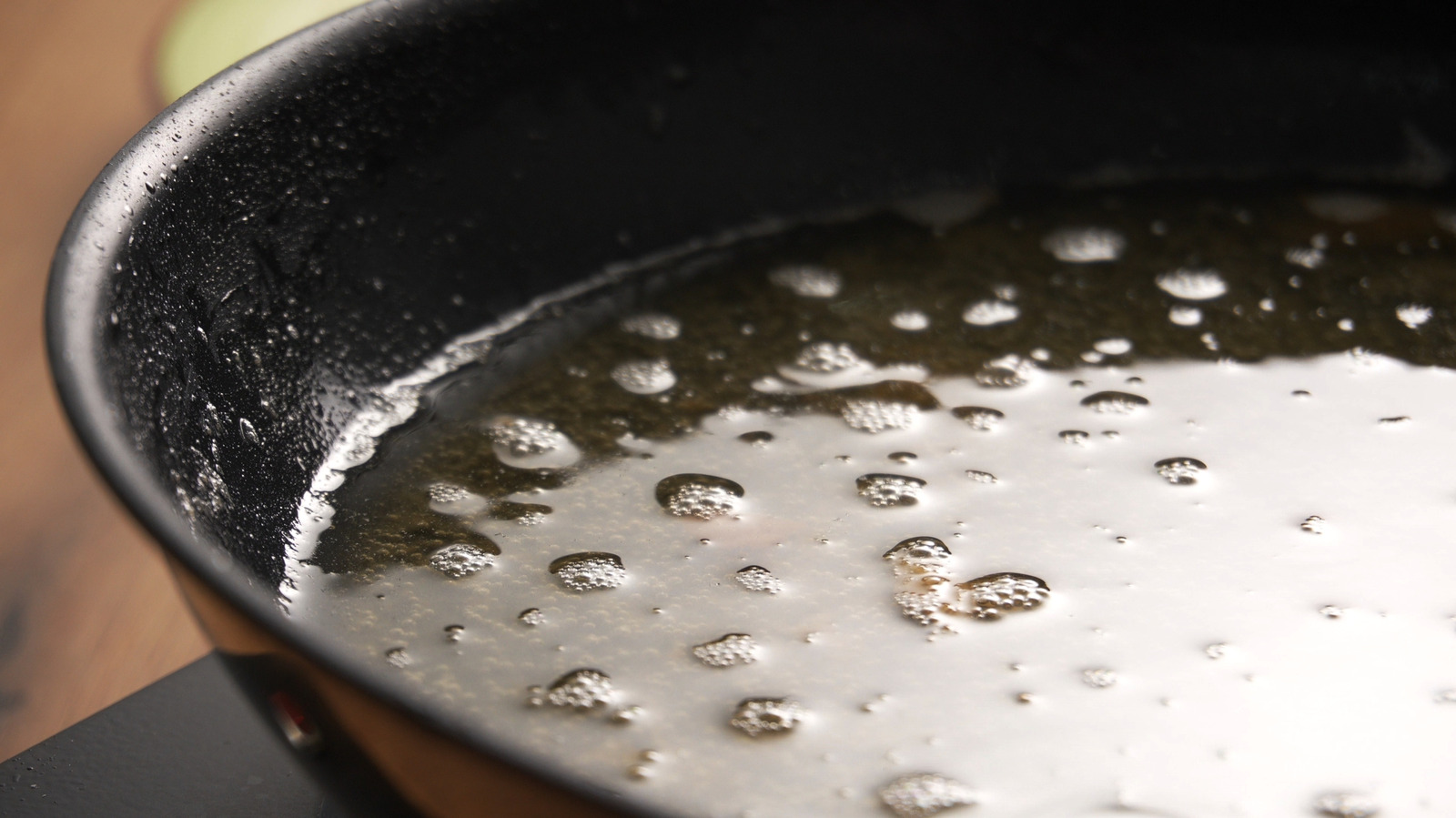Camp Pennant co-owner Michael Fraser stands alongside some of the brewing vats he hopes to rent as incubator space for startup breweries. Brianna Soukup/Portland Press Herald Several months after buying the Old Port brewpub and distillery Liquid Riot, co-owner Michael Fraser came face to face with a hard reality. Fraser and his team had rebranded the operation into Camp Pennant, a brewery and distillery with a summer camp-themed bar and restaurant.
Fraser — who is also a partner in Bramhall, CBG, Nosh Kitchen Bar, Paper Tiger and Roma — figured they could improve upon Liquid Riot’s business model and grow the customer base with the new brand. “When we first bought this, my hope was we’d be able to increase (business) by 10 percent. And I was dead wrong,” Fraser said, noting that Camp Pennant’s beer and spirits have only about 20 percent of the distribution that Liquid Riot had.

“Liquid Riot had people walking in and market recognition.” This spring, about nine months after buying the business, Fraser and his partners listed Camp Pennant for sale for $895,000. Meanwhile, they’re exploring ways to create new cash flow through their brewing and distilling operations, possibly making a sale unnecessary.
But regarding Camp Pennant’s line of 10 beers, Fraser said his team has found it prohibitively difficult to make headway in Maine’s craft brew market, which has plenty of familiar brands. “The consumer during COVID was trying a bunch of different (beers),” he said. “Now, I feel like they’re going with their tried and true, and trying new things less.
So if you’re a new brand, it’s really hard to convince the consumer to try new stuff. And that’s also what I’ve been told by distributors.” These are challenging times for newer and established craft breweries alike, however, as the entire industry appears to have lost some fizz in 2024.
The Brewers Association, a national trade group for small and independent craft brewers, released its annual report April 15. The data showed that last year — for the first time since 2005 — the number of craft brewery closings nationwide (501) outpaced openings (434), and the total number of breweries also dropped by 67 to 9,680. “It’s a very different business environment than it was a decade ago, when our industry was categorized by pretty explosive growth year after year,” Brewers Association staff economist Matt Gacioch said, noting that after the previous “unsustainable growth” trend, supply is now lining up better with demand in the craft brew industry.
“It’s not a fall off of a cliff, but more of a plateauing, characteristic of a more mature market.” Sebago Brewing co-founder Kai Adams, left, and director of brewery operations Peter Dahlen at the Sebago Brewing company headquarters in Gorham last fall. Derek Davis/Portland Press Herald KEY INFLECTION POINT Presenters and attendees at the recent New England Craft Brew Summit in Portland acknowledged the slowdown, evidenced by the total number of New England craft breweries dropping 0.
5 percent last year. Though new breweries and brewery locations in Maine still outnumbered closings last year 13-6, “the growth rate itself has slowed tremendously,” said Maine Brewers’ Guild Executive Director Sarah Bryan. According to statistics from the Maine Bureau of Alcoholic Beverages and Lottery Operations, the state has 176 active breweries this year, down from its all-time peak of 184 in 2023.
The Maine Brewers’ Guild figures show that Maine had 122 craft breweries in 2018, and just 73 in 2015. “We’re at a key inflection point,” Bryan said. “Headwinds are facing everyone in craft beer equally, and it really is about finding new innovation and strategy.
” Camp Pennant produces about 325 barrels of beer a year. But Fraser and his team hope to rent out some of their Commercial Street brewing vats to startup breweries or established companies looking to downsize their footprints. The move would involve rebranding Camp Pennant into a kind of “incubator collective,” allowing the restaurant to continue operating and serve as a tasting room for all the breweries and spirits producers involved (Fraser also hopes to rent space to another distiller).
Challenges facing the craft brew industry today are myriad, including rising operational costs, economic uncertainty from more potential tariffs and increased competition. Also, changing consumer tastes. Many people — including a sizable portion of legal-age Gen Z consumers — are drinking alcohol less often, or quitting altogether.
Others are switching their beverage of choice to ready-to-drink (rtd) cocktails, hard seltzers or hemp- and THC-based drinks. “The interest in general in craft beer has sort of flat-lined, even started to decline a little bit. It’s reached as big as it’s going to get for now,” said David D’Angelo, chief operating officer of Sidereal Farm Brewery in Vassalboro, which produces 500-650 barrels a year.
“We’ve definitely seen that people are visiting us less than usual. Everybody I’ve talked to, even breweries in the city, say they’ve seen that.” “Consumers are always changing, but it feels like the rate at which it’s happening now in the post-COVID era is somewhat unprecedented,” Gacioch said.
“Consumers are behaving differently around alcoholic beverages and beer in particular than they did before the pandemic.” A Gallup survey shows that the percentage of Americans who regularly consume beer, liquor, or wine dropped from 67% in 2022 to 58% in 2024. Young adults age 18-34 are the cohort that most embraces the “sober-curious” movement.
“The number of breweries is the same, but the beer drinkers are shrinking,” said Kai Adams, co-founder of Gorham-based Sebago Brewing Company, which produces about 10,000 barrels annually. “The younger people aren’t drinking craft beer like they used to.” Gacioch observed that Gen Z drinkers aren’t like the beer-nerdy Millennials who dominated the craft brew industry over the past two decades, both as consumers and brewing professionals.
They’re less concerned with understanding the science of beer and the nuanced differences among its many classic styles, and more interested in flavors, including sweeter, fruitier options not typically found in craft beer. “There are plenty of ways to connect with Gen Z consumers, but from what we’ve seen, it doesn’t look the same as what it did with the Millennial generation,” Gacioch said, adding that the widespread legalization of cannabis products has also likely dampened demand for craft beer. Moreover, many consumers of all ages are gravitating toward hard seltzers and rtd cocktails, which tend to have fewer calories and less alcohol by volume than craft beers.
NEW PRODUCTS FOR CHANGING TASTES “Consumers’ tastes have changed,” Bryan said. “And to the breweries’ credit, they are taking a long, hard look at how tastes have evolved, and you see a lot of product diversification happening in the market right now.” “The growth now is in alternative beverages.
Diversifying the portfolio has really helped us quite a bit,” D’Angelo said, noting that Sidereal has offered hard cider , mead and wine products since they launched in 2022, and will begin amping up production of those lines. It also may add a line of rtd cocktails, using their farm ingredients for flavorings. The growing popularity of rtd cocktails has not been lost on local brewers.
“We decided we wanted to be on the forefront of making a vodka seltzer in Maine using delicious Maine water,” said Orono Brewing Company co-owner Abe Furth. “When we launched Wild Maine Hard Seltzer in 2021, it was kind of an unusual move, and now there are lots of other breweries that are doing it. It’s become a huge part of our brand.
” Orono’s business is more robust these days than many other companies interviewed for this story — they produced 13,000 barrels of beer last year, up from 5,000 in 2022 — and the Wild Maine line has been particularly successful. Last year, the company produced about a million cans of Wild Maine, and Furth is projecting 20% growth this year. Adams said Sebago launched its Revel Coast rtd cocktails two years ago, aiming particularly for younger customers who wanted more “flavor variation” beyond beer.
Last year, Sebago introduced its non-alcoholic THC drink line, Mystic Cove. “It’s been exciting this year and a really good first quarter, even amid the uncertainty,” said Adams, noting that the new products have played an instrumental role in the company’s continuing success. “If you’re not engaged with the customer and changing and evolving, you’ll never survive.
” Fraser said Camp Pennant will also launch its own rtd cocktail line this summer. But he remains vexed by Camp Pennant’s lack of a recognizable, brewery-defining “flagship” beer along the lines of Allagash’s White, Bissell Brothers’ The Substance or Maine Beer Company’s Lunch. Allagash White, the flagship beer of Portland’s Allagash Brewing Company.
Photo courtesy of Allagash Brewing Co. “All those places make amazing products, but the one individual product drives all those things,” said Fraser. “Can you hit that home run? Because it’s really hard to do.
” He’d hoped Camp Pennant’s Light Lager could be its flagship, but he realizes that level of market recognition requires years of local promotion and pavement-pounding. He recalled Allagash founder Rob Tod bringing samples of Allagash White around Portland “for I don’t know how many years, five, six, seven — before it really took off. I was bartending at Fore Street.
He would be there every week at 4:30 on Friday, have a beer, test it, talk to everybody. And he was doing that all around town.” “For new breweries to enjoy the growth that the breweries before us and those in my era have enjoyed is going to be difficult,” said Furth, who expects Orono’s total business to grow by double digits this year.
Orono’s Tubular IPA accounts for 80 percent of its production. “It’s a more mature landscape. If you’re a brewery that doesn’t have a flagship, it’s going to be tough.
” STILL ROOM FOR SMALL BREWERIES “The barrier of entry is higher, absolutely,” Bryan of the Maine Brewers’ Guild said. “The craft beer consumer has become exceptionally sophisticated, and to make a formative impact and get folks to consider new brands or styles takes more finesse than it did in previous years.” Bob Bryant opened Bryant’s Brewery and tasting room in 2022 inside the four-bay garage of his home on Great Moose Lake in Hartland.
The brewery produced 39 barrels last year — the company also includes a coffee roastery — and Bryant has been looking for opportunities to expand the operation. “But frankly, now is not a good time to expand in the craft brewing industry. The industry has matured, and certainly there’s less interest than there was in the ‘hockey stick’ years of the 2000s and 2010s,” Bryant said, referring to the shape of financial projection charts depicting an initial brief period of slow growth followed by a dramatic uptick in revenue.
Like other Maine brewers, Bryant is dreading how tariffs will affect his business, knowing he’ll have to pay more for his 32-ounce growler cans because of aluminum tariffs. “Because we have very low volume, the price of those cans is already very high,” he said. “We’ve talked about the need to raise our prices in order to make ends meet.
We’re looking at 15 percent increase at a minimum.” Bryant has also had a hard time finding space for his product on local retail shelves that are already crowded with Maine craft beer options. “If you’re not on the shelves already, you’re trying to push somebody out, and there’s only so much shelf space,” he said.
“If you’re already established, then it certainly is a lot easier to make the justification for getting that space from a retailer.” Byron Kern and his wife Elise launched Well & Good Brewing Company in North Yarmouth in 2024, and are on pace to produce 200-250 barrels in their first year of production. “In some ways, being small helps us right now because we’re able to just focus locally,” Byron Kern said.
“What the state is doing or what the nation is doing aren’t necessarily relevant to us. We’re primarily focused on our tasting room and serving our local community, and that seems to be working for the moment. “We didn’t build the business with the expectation that things would always be growing, which I think is to our benefit,” Kern added.
“We wanted to keep things more contained and grown at a slower, more organic pace.” Well & Good features a two-story, family-friendly tasting room in a log cabin. It’s a key feature of their business model and how they aim to set themselves apart in the market.
Well & Good Brewing’s tasting room is housed in a log cabin-style former home in North Yarmouth. Courtesy of Well & Good Brewing “You can get a great beer at any corner store and drink it in the comfort of your own home,” he said. “What people come to a brewery for is an experience.
Our log cabin is rustic and inviting, warm. We have a kids’ playroom, coloring pages and juice boxes available. Having a space where the adults can relax and have a good time and the kids can be entertained in a way that’s not disruptive to other people is rare.
” Kern and other brewery professionals believe that while Maine craft beer market may be reaching a saturation point with larger breweries, smaller operations will find room. “There is always going to be the opportunity to be that old English pub in your community,” Kern said. “You could have one of those in every single town, and they’d do just fine.
But if you’re trying to be the next Maine Beer, you’re going to have a really hard time doing that.” “I think you’ll continue to see new places open, maybe not at the same frequency of the past 10 years,” D’Angelo said. “But there are new ones I know of that already in the planning stages.
There’s still room for those small community-based breweries, or breweries that are already established to open a satellite location.” Maine brewery leaders also say they expect to see more mergers and acquisitions in the industry, deals meant to boost financial stability and enhance portfolios. They point to Lone Pine Brewing’s merger with Massachusetts-based Lord Hobo Brewing in November, or Oxbow Brewing Co.
’s purchase of Rising Tide Brewing Co. at the end of last year. Even veteran brands with healthy balance sheets are feeling the squeeze.
Adams said sales at Sebago’s four brewpubs have stayed strong, but because of the rising cost of goods and wages, “it’s really difficult to make a dollar now.” He and others said business acumen may be a brewer’s best asset going forward. “Fifteen years ago, you could succeed based on just passion and the sheer amount of demand for local beer,” Furth said.
“Now, you have to know how to run a business as well. And as the industry matures, that’s going to make a difference with who is still here five years from now.” Maine business owners raise alarm about tariff impacts We believe it’s important to offer commenting on certain stories as a benefit to our readers.
At its best, our comments sections can be a productive platform for readers to engage with our journalism, offer thoughts on coverage and issues, and drive conversation in a respectful, solutions-based way. It’s a form of open discourse that can be useful to our community, public officials, journalists and others. Read more.
.. We do not enable comments on everything — exceptions include most crime stories, and coverage involving personal tragedy or sensitive issues that invite personal attacks instead of thoughtful discussion.
For those stories that we do enable discussion, our system may hold up comments pending the approval of a moderator for several reasons, including possible violation of our guidelines. As the Maine Trust’s digital team reviews these comments, we ask for patience. Comments are managed by our staff during regular business hours Monday through Friday and limited hours on Saturday and Sunday.
Comments held for moderation outside of those hours may take longer to approve. By joining the conversation, you are agreeing to our commenting policy and terms of use . More information is found on our FAQs .
You can modify your screen name here . Show less Please sign into your Press Herald account to participate in conversations below. If you do not have an account, you can register or subscribe .
Questions? Please see our FAQs . Your commenting screen name has been updated. Send questions/comments to the editors.
.
Food

Maine breweries seek growth solutions in challenging times

As the craft beer market plateaus nationally and Maine's market becomes more competitive than ever, local brewers turn to new alternative products and other innovations.















